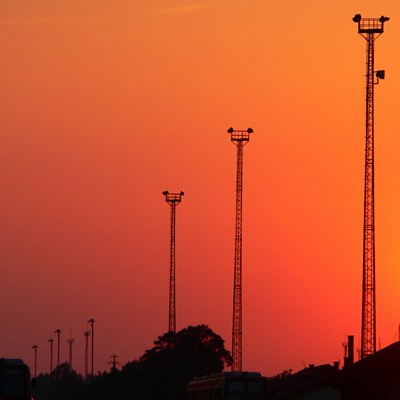Jeff Forry has been fielding a lot of calls from irate residents of Spokane County lately, mostly from people fuming about the cell phone towers that seem to be sprouting up everywhere. But when he returns their calls, he often finds he's calling a cellular phone.
The irony is not lost on Forry, a senior building technician in the county's division of building and code enforcement, nor on other county officials in the Inland Northwest who are faced with containing the breakneck pace of construction of the cell phone towers. The problem is that the municipalities often don't have adequate regulations to deal with the tower building boom.
"Technology has leapt forward, but our regulations have not followed," says Spokane County Commissioner John Roskelley. "We are seeing these towers out there, like technological billboards, going up in rural areas where you don't expect to see them. We need to get our regulations in place prior to these things inundating the county. They visually detract from the beauty of the county, and it is time to move on it."
In the last two weeks, city and county officials have all moved to consider imposing new regulations on the construction of the towers, mirroring a nationwide trend.
Spokane City Council members on Monday night unanimously approved a 90-day moratorium on new towers so officials can reexamine the city's current guidelines. In Spokane County, commissioners have taken the first step toward imposing a moratorium on new towers until ordinances can be updated.
And in Kootenai County, where up until now no substantive regulations have existed, the planning commission has just unanimously approved a series of tough new guidelines demanding towers be shorter and blend in better with their surrounding environment. The proposed regulations will now be sent to county commissioners for approval.
On both sides of the state line, the action has been prompted by a combination of property-value conscious, not-in-my-scenic-eyeshot-fueled citizen activism and by county officials who were becoming aware of the deluge of cellular tower building permit applications flooding in.
"We basically had no standards before," says Sandy Meehan, an associate planner in Kootenai County. "And we were processing these applications left and right."
If the new regulations are approved in Kootenai County, towers in unincorporated areas there will be capped at 150 feet and will be required to be at least two miles apart. In addition, all towers, regardless of their site, will have to apply for "conditional use" permits, potentially subject to changes after public hearings.
Meanwhile, in Spokane County, existing regulations do mandate that towers be no more than 150 feet tall, and that they be fenced in, but there are no restrictions on how close towers can be to one another. Within city limits, guidelines already encourage camouflaging towers, and landscaping around them, but they do allow new towers to be built within one mile of existing structures.
Staff in both counties are also promoting "colocation," which encourages different wireless companies to share space on the same tower instead of building redundant infrastructure. But this can be an especially sore subject among wireless providers, since companies that compete in a market may not want to buddy up on towers.
"At AT&T, we are very supportive of colocation opportunities, provided that those opportunities meet three criteria: they must be technologically feasible, practically feasible and economically feasible," says Michael Broom, director of corporate communications for AT&T Wireless in the Pacific Northwest.
The towers are most often attacked for being "a visual eyesore," as Howard Biggs, a Coeur d'Alene resident who is fighting a proposed tower to be located near his home on Lake Coeur d'Alene, puts it.
In Spokane, any proposed communications tower more than 60 feet in height must undergo an environmental review process, according to state law, and Forry says significant environmental impacts have never been identified during a review.
Last November, the U.S. Fish and Wildlife Service issued a series of guidelines designed to reduce the number of birds dying after collisions with communications towers, estimated at around 4 million a year.
But for Biggs, spokesman for the Coeur d'Alene-based Citizens for Appropriate Cell Tower Siting (CACTS), what's at risk is the shoreline and beauty of the region's lakes.
"Once you start letting these things in, there's no stopping them," he says. "I'd hate to see towers all along the perimeter of the lake." Biggs, and the 170 people who signed his petition, want cell towers to be permanently prohibited from coming within two miles of Lake Coeur d'Alene and Hayden Lake, and suggest locating them primarily along surrounding highway corridors.
However, the access issue isn't going away: Millions of people everywhere use cell phones, and they want coverage in more remote areas. And since wireless companies space towers about six miles apart for optimal service, more coverage means more towers.
"Basically, the popularity of the product, because of convenience and safety, demand larger areas where phones will work, which means more towers," says Scott Robinson, general manager for AT&T wireless services in Spokane. "The way I understand it, we are always looking for expansion in Spokane and Coeur d'Alene."
















